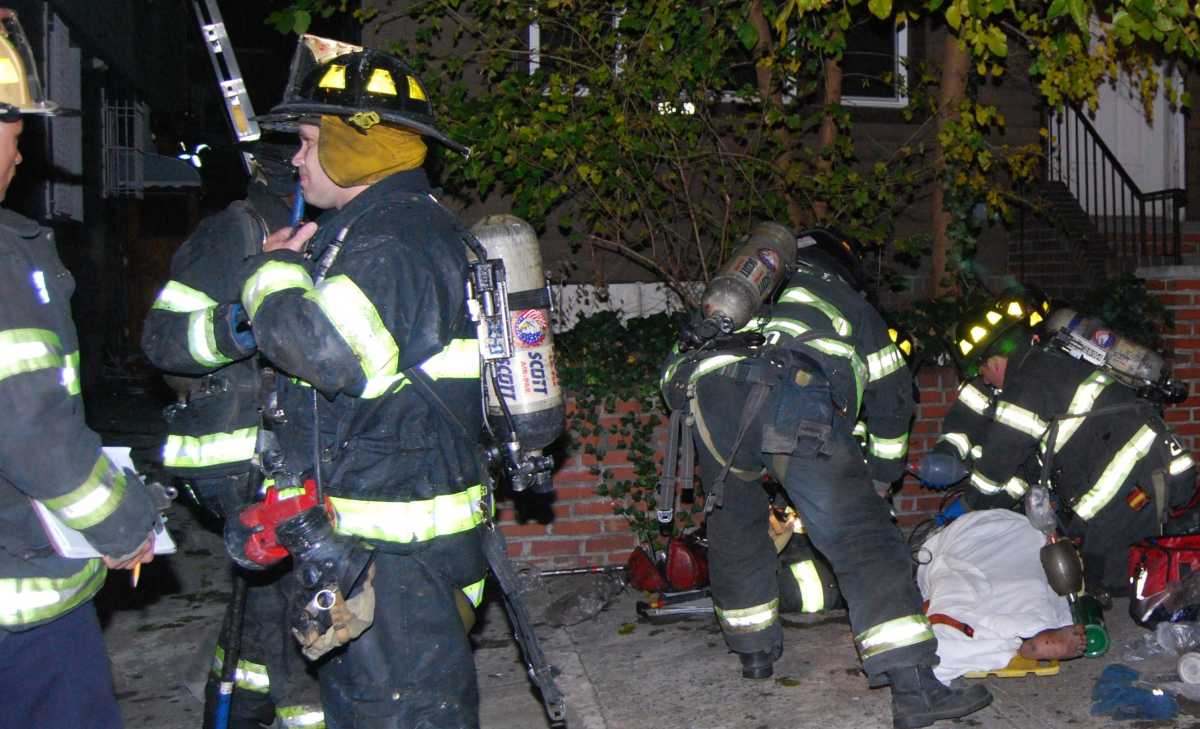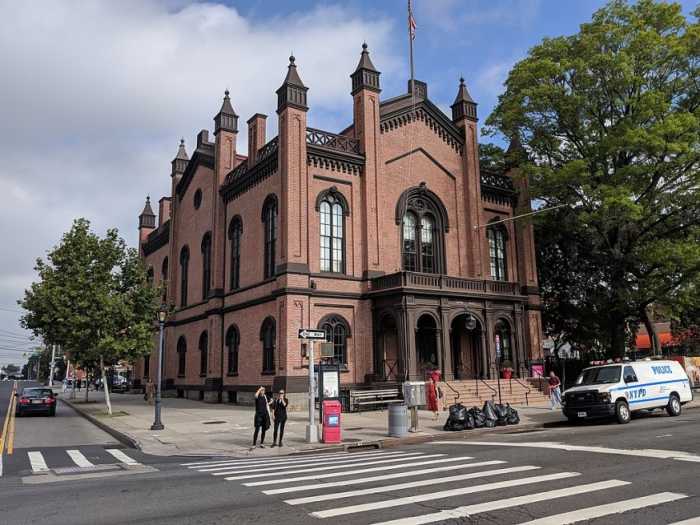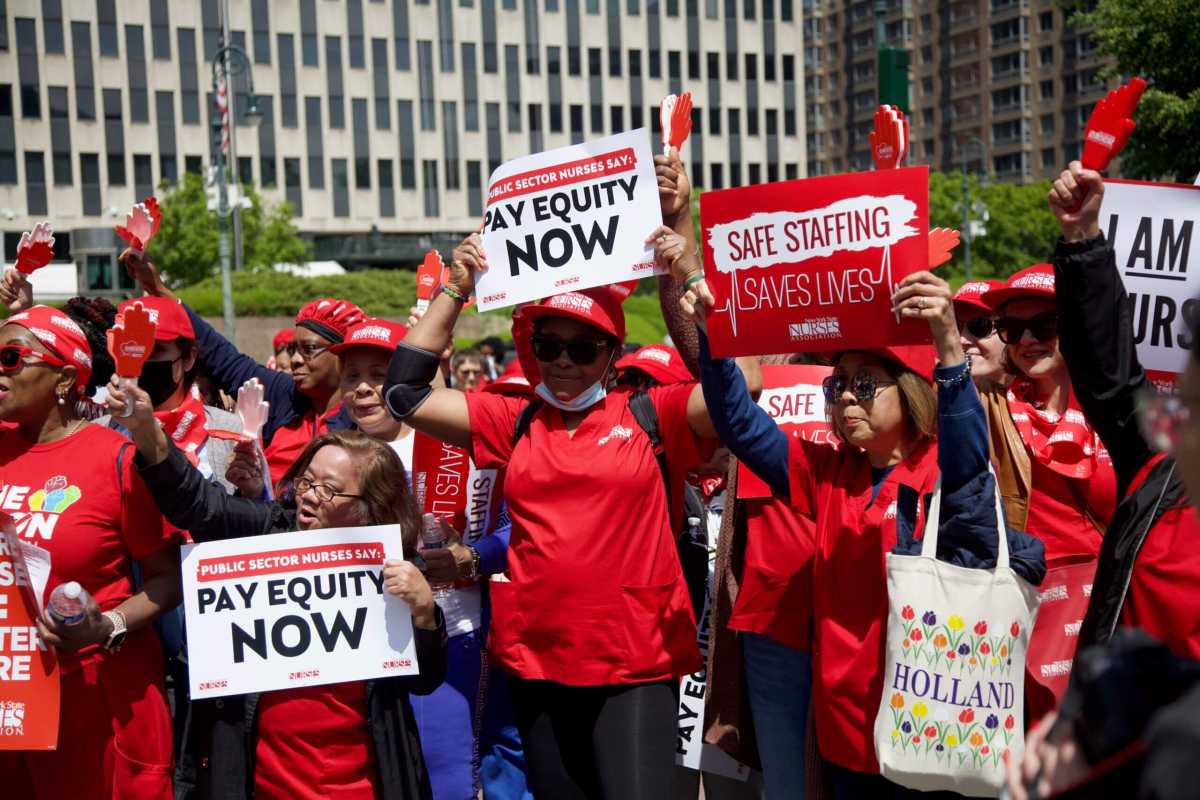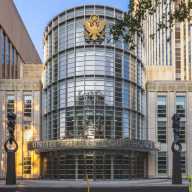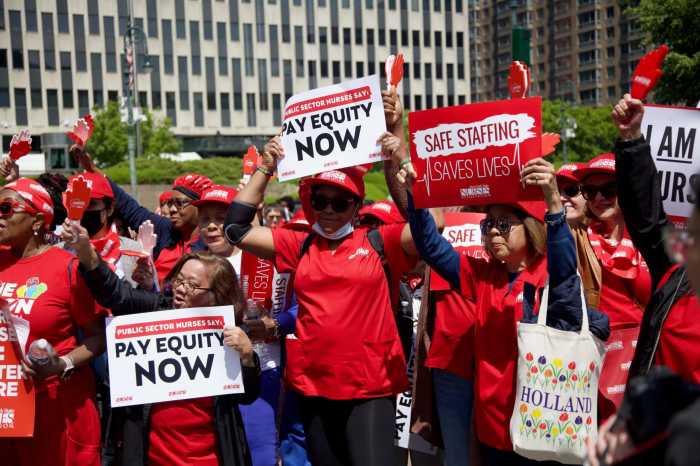The city stepped up its ongoing battle against illegal conversions on Thursday by providing information packets at subway stations in two Queens areas with high rates of unlawful housing.
Representatives of the Buildings Department, the Fire Department and the Department of Housing Preservation and Development (HPD) handed out fliers about the dangers of illegal conversions at the Fresh Pond Road station on the M line in Ridgewood and the Flushing-Main Street stop on the 7 line.
Middle Village, which is served by the M line, and Flushing account for the highest number of illegal conversions in Queens, according to the Buildings Department. A number of homeowners in these areas have been caught creating illegal living spaces in violation of zoning, building and fire codes.
Illegal conversions often have unsafe conditions and lack the required secondary means of egress, proper windows or ventilation, and secure utility lines.
Thursday’s flier distribution was part of the Buildings Department’s “Living Safely” campaign, which was launched following a fire in Woodside in November of 2009. Three men who lived in an illegal basement apartment at the home died in the blaze.
Illegal conversions poses risks not just to residents but also to firefighters who respond to fires at illegally converted homes, according to Fire Commissioner Daniel Nigro. In 2005, two firefighters were killed in the Bronx when they were forced to jump out of a window after being unable to escape the flames inside an illegally converted apartment.
“Illegal apartments often lack basic safety standards, such as having only one exit — which, if it’s blocked in a fire, can be fatal for occupants as well as first responders,” Buildings Commissioner Rick Chandler said. “Fortunately, it’s easy to recognize an illegally converted apartment if you know what to look for. The goal of the Living Safely campaign is to provide New Yorkers with the information they need to identify safe and legal housing for themselves and their families.”
Residents are encouraged to report any suspected illegal conversions to the city’s 311 hotline. Click here for more information.
The fliers included 10 tips for New Yorkers to follow to avoid renting illegally-converted units. They are as follows:
- Know the market. Be wary of units that advertise significantly lower price points for comparable apartments in the area.
- Beware of the words “basement” or “attic.” Advertisements that use these words are often for apartments that typically lack adequate exits.
- Avoid apartments that have rooms without windows or very small windows. These are often found in illegal cellar or basement apartments. Landlords will sometimes describe the ones with very small windows as “sunny” to entice renters.
- Beware of the word “flex.” “Flex” implies that the apartment can be converted into a multi-bedroom unit using pressurized walls. The installation and/or construction of a wall without proper permits is illegal.
- “Utilities included” is a red flag. A landlord may not want utilities under another name connected to the property because those residents would violate the legal occupancy of the building.
- Avoid apartments with odd layouts. They are often described as “unique” or “interesting” and are oddly situated (i.e. a shower installed in the kitchen).
- Be cautious when a landlord refuses to disclose the exact address. Landlords advertising illegal apartments may ask to meet a potential renter before exposing the address to possible regulation or penalty.
- Beware of apartments where you can’t have mail delivered. Landlords advertising illegal apartments will often request that tenants obtain a separate P.O. Box.
- Beware of no-lease apartments. Be suspicious of a landlord who declines to draw up a lease, requests a month-to-month agreement or requires cash payments.
- Check for adequate means of egress and look out for locked doors in the unit. A tenant should be able to access all available exits either directly from the unit or a public hallway.

